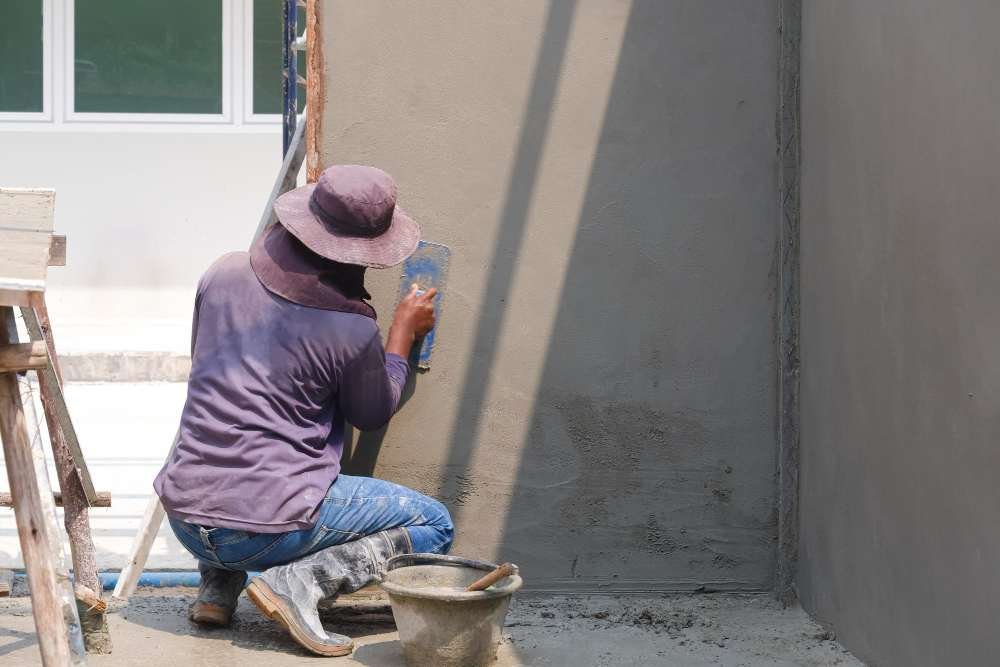When budgets are lean but aspirations are high, a smart, strategic Office Interior Design Ideas enables us to transform a cramped workplace into a productive and inviting hub. Below, we outline practical, cost‑effective tactics that amplify efficiency, brand image, and staff morale—without draining cash flow.
1. Maximise Space Efficiency With Strategic Layouts
We begin by analyzing traffic patterns. Corridor widths, desk orientations, and shared zones should be designed to create a clear circulation path that avoids bottlenecks. Position workstations along walls to keep the center open for collaboration pods or hot‑desking tables. Install ceiling-mounted shelves or wall-hung pegboards to free up floor space while providing generous vertical storage.
Key takeaway: Every square meter of footprint must serve at least two functions—movement and work, storage and display, or interaction and relaxation.
2. Choose Budget‑Friendly Materials That Look Premium
Instead of natural timber flooring, consider high‑quality vinyl planks with realistic grain embossing; they resist moisture, tame acoustics, and slash installation costs. For walls, washable, low-VOC paints in soft neutrals bounce light and create a professional feel. Laminate worktops resembling marble or concrete grant contemporary flair at a fraction of authentic slabs.
Invest in one statement finish—perhaps an accent wall clad in reclaimed pallet wood or compressed straw boards. The texture creates visual drama, so we can keep the remaining palette minimal and economical.
3. Incorporate Multifunctional Furniture for Dramatic Savings
Furniture that converts supports fluctuating team sizes. Fold‑out wall desks double as meeting whiteboards. Ottomans with built-in storage can serve as extra seating or side tables. A modular sofa configured in an L‑shape during brainstorming can be divided into individual seats for training sessions. Whenever possible, opt for flat‑pack systems; they ship cheaply, assemble quickly, and swap components easily as needs evolve.
4. Leverage Colour Psychology to Boost Productivity on a Budget
Paint is the most affordable mood‑setter. Soft blues calm, muted greens refresh, and warm greys provide neutrality that complements branding accents. Use a 60‑30‑10 rule: 60 % primary neutral, 30 % secondary soothing hue, 10 % vivid brand tone. This prevents sensory overload in tight quarters.
To foster focus, we apply deeper shades behind computer monitors to cut glare. Hallways wear brighter tones that energize staff in transit. By zoning via colour, we avoid building physical partitions, saving construction costs.
5. Harness Natural Light and Smart Illumination
Daylight is free; we make it travel. Remove bulky blinds and replace them with sheer roller shades. Place reflective surfaces—such as whiteboards, glass partitions, or metallic desk legs—opposite windows to bounce the rays deeper inside. Where sunlight falls short, choose LED tubes with 4000 K neutral white; they sip power, last long, and mimic daylight.
Task lights featuring clamp bases let each employee tailor brightness without adding desk clutter. Linking fixtures to occupancy sensors ensures energy isn’t wasted when rooms sit empty, trimming utility bills month after month.
6. Embrace DIY Décor Hacks to Personalise on the Cheap
Rather than pricey artwork, print high‑resolution brand graphics on self‑adhesive vinyl and wrap column bases or cupboard doors. Craft planter boxes from upcycled shipping crates; fill them with hardy pothos or snake plants that purify air while softening acoustics. Turn spare fabric swatches into pinboard mosaics, providing both sound absorption and a canvas for staff achievements.
We also encourage employees to contribute handmade items—origami mobiles, palette knife canvases, or 3‑D‑printed desk organizers. This crowdsourced décor builds ownership and community spirit at negligible cost.
7. Integrate Compact Technology Upgrades Without Overspending
- All‑in‑one printers cut footprints and maintenance contracts.
- A cloud‑based PBX negates on‑premise servers, reducing rack furniture.
- Cable trays mounted under worktops hide wires, creating tidy sightlines.
Mount a short‑throw projector on the ceiling instead of buying a large display. When not in use, the blank wall reverts to whiteboard duty—two functions, one surface.
8. Plan for Growth With Scalable Elements
Our design philosophy anticipates expansion so that today’s savings don’t become tomorrow’s liabilities. Choose clip‑on acoustic panels that can enlarge grid‑style as staff numbers rise. Select rail-mounted task lighting, allowing additional fixtures to be easily slid anywhere. Specify carpet tiles with mixed textures; if a segment stains, we replace only the affected tiles, not the entire roll.
9. Green Initiatives That Pay Dividends
Energy-smart design is both eco-friendly and wallet-friendly. Install programmable thermostats to align HVAC runtimes with office occupancy. Use motion‑sensing taps in pantries to curb water waste. Switching to refillable glass dispensers for soap and sanitizer eliminates single‑use plastic purchases.
Even micro-scale interventions—such as adding door sweeps to reduce air conditioner leakage—deliver measurable savings over a fiscal year.
10. Measure, Refine, Repeat
Post‑implementation, we gather metrics: employee satisfaction surveys, electricity bills, and space-utilization heatmaps tracked via Wi‑Fi analytics. Continuous feedback pinpoints what redesign tweaks yield the best ROI. Agile interior design is never static; by iterating, we keep costs low while workplace performance climbs.
Frequently Asked Questions
1. How can we redesign a small office on a strict budget without professional help?
Begin with a clear floor plan, prioritize decluttering, then repurpose existing furniture with fresh paint or new handles. Add budget-friendly upgrades like stick-on wall graphics, modular shelving, and energy-efficient LED strips.
2. What colours work best for productivity in compact work areas?
Neutral bases, such as warm greys and highlights of soft blues or greens, encourage a calm focus. Reserve vibrant brand colors for small accent zones to avoid visual fatigue.
3. Which furniture items give the biggest ROI for small offices?
Multifunctional pieces—such as folding wall desks, storage ottomans, and modular sofas—offer seating, work surfaces, and organization in one, maximizing utilization while minimizing expenses.
4. How do we ensure adequate storage without installing bulky cabinets?
Utilize vertical space with ceiling-high open shelving, pegboards, and magnetic strips. Under‑desk drawers and rolling caddies slip beneath worktops to keep floors open.
5. What inexpensive décor ideas add personality to a budget office?
Upcycle crates into planters, display staff‑created artwork, apply vinyl wall decals, and repurpose fabric scraps into acoustic pinboards. These elements inject character at minimal cost.
